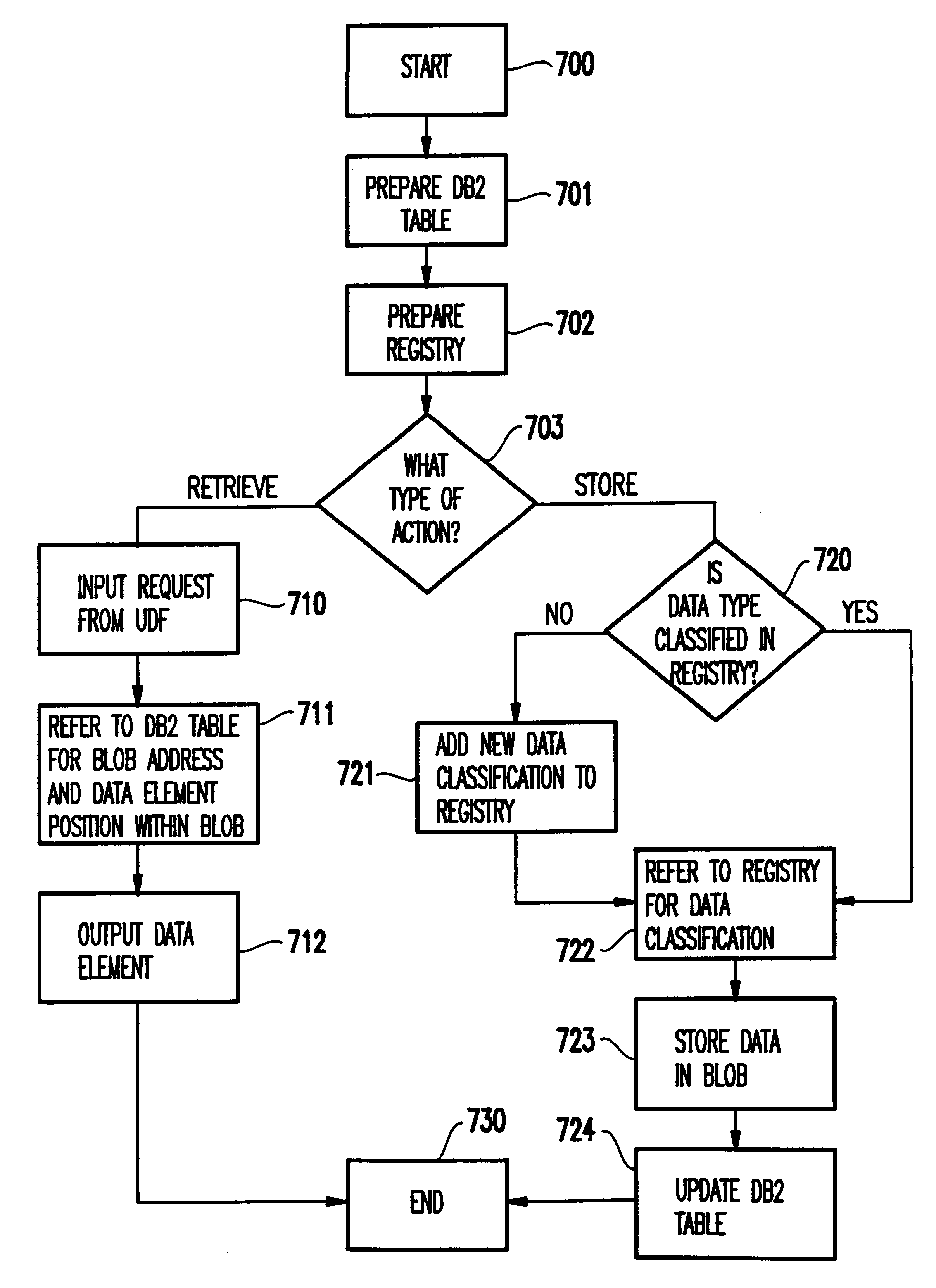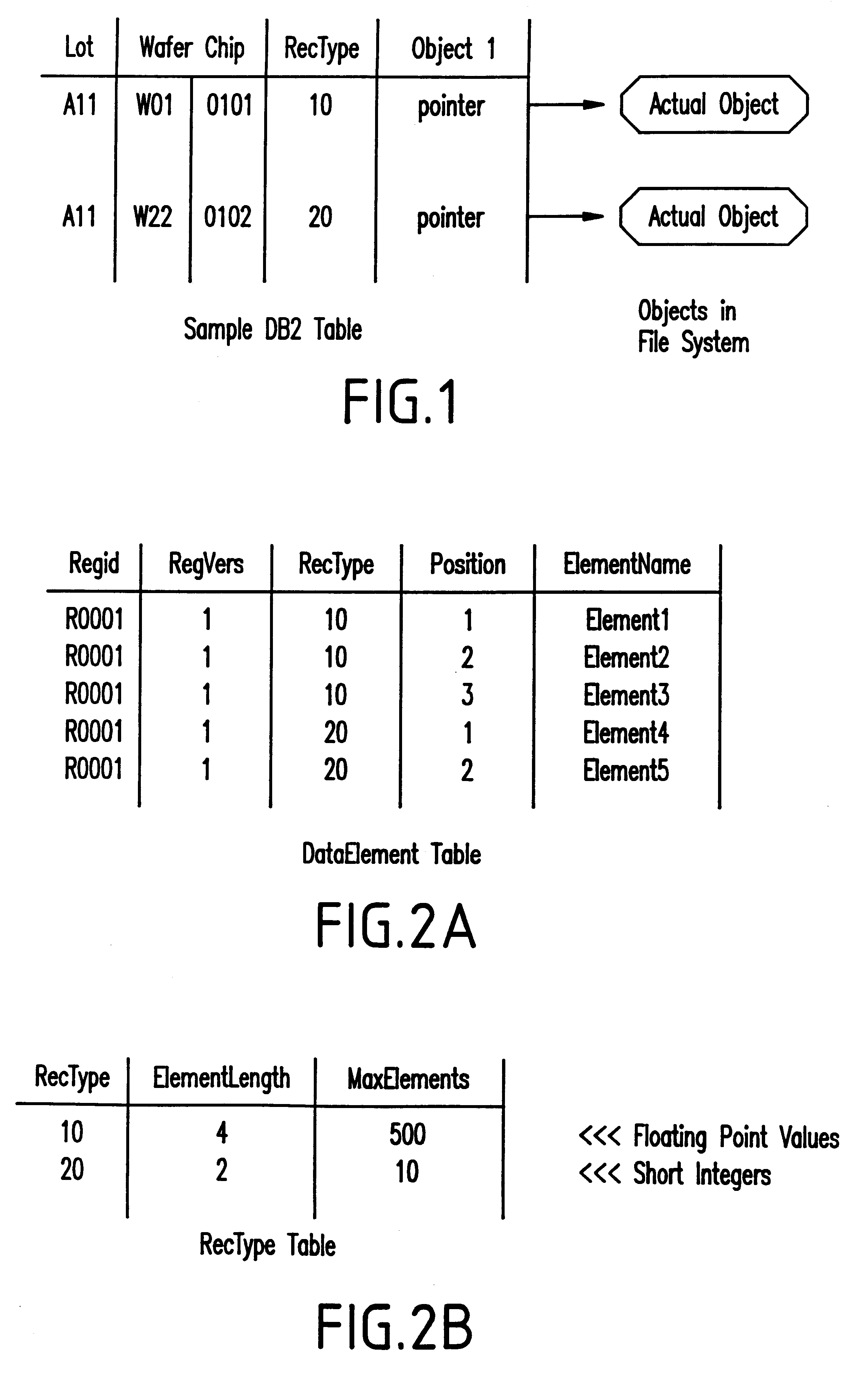Mapping binary objects in extended relational database management systems with relational registry
a database management system and database technology, applied in the field of relational databases, can solve problems such as severe problems, unmanageable and quick, and extend beyond capabilities, and increase the utilization factor of each row of the data tabl
- Summary
- Abstract
- Description
- Claims
- Application Information
AI Technical Summary
Benefits of technology
Problems solved by technology
Method used
Image
Examples
Embodiment Construction
Referring now to the drawings and more particularly to FIG. 1, a sample DB2 table utilizing an inventive Binary Large Object structure (sometimes referred to herein as "BLOB" or "object") is illustrated. The BLOBs extend the conventional relational model discussed above by acting as pure data columns. Unlike conventional columns, the BLOBs do not have any specific size or data type and each BLOB within a given database can have a different size. These columns (or BLOBs) can be of any length, up to an installation maximum size, and, as far as the database manager is concerned, have no form or organization. Thus, with the invention, the database software can determine the structure of the BLOBs for maximum efficiency.
More specifically, the table in FIG. 1 identifies aspects of a semiconductor manufacturing process including the lot identification (Lot), the wafer identification (Wafer) and chip identification (Chip). Further, the table in FIG. 1, identifies the type of record (RecType...
PUM
 Login to View More
Login to View More Abstract
Description
Claims
Application Information
 Login to View More
Login to View More - R&D
- Intellectual Property
- Life Sciences
- Materials
- Tech Scout
- Unparalleled Data Quality
- Higher Quality Content
- 60% Fewer Hallucinations
Browse by: Latest US Patents, China's latest patents, Technical Efficacy Thesaurus, Application Domain, Technology Topic, Popular Technical Reports.
© 2025 PatSnap. All rights reserved.Legal|Privacy policy|Modern Slavery Act Transparency Statement|Sitemap|About US| Contact US: help@patsnap.com



